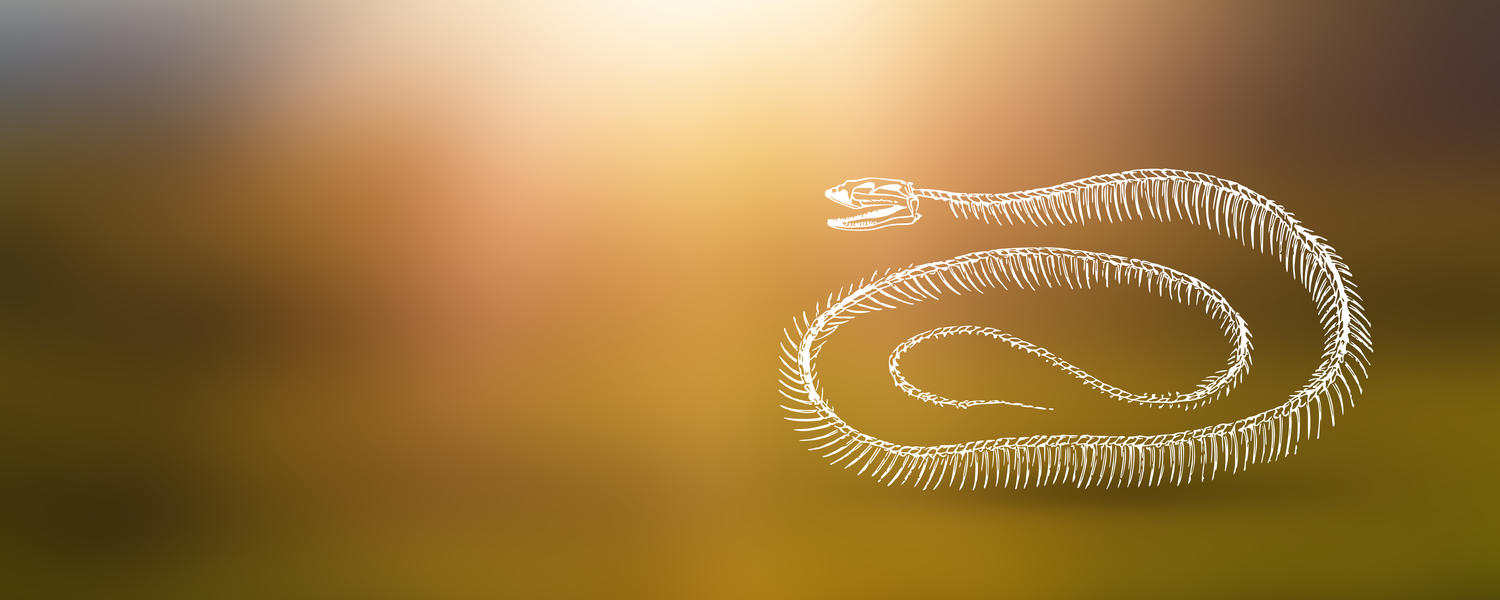
Anatomy: Exotics

Welcome to exotic animal anatomy!
Here we will focus on the anatomy of different exotic animals such as snakes, lizards, turtles, rabbits and hedgehogs!
Snake Anatomy
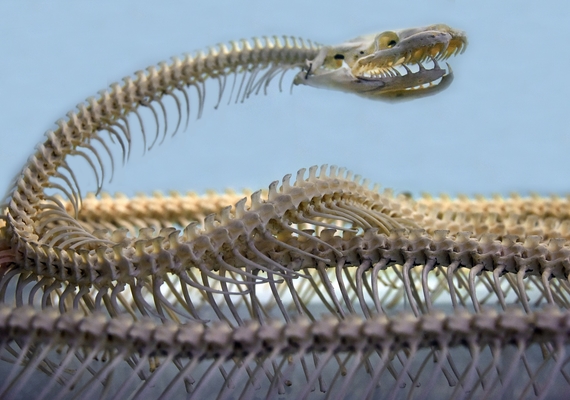
Introduction to Exotics
In all of the other animals you will learn about this week, the two halves of their jaw bone or mandible is fused. However, this is not the case in snakes! The two halves of their mandible are able to move independently. Snake skulls are kinetic meaning that they can move and stretch. This helps snakes to move their prey into their mouths and allow them to ingest much larger prey than you would think is possible!!
With this image on the right, you can also appreciate just how many ribs a snake has! Unlike other animals, the ribs on the snake continue all the way down to the body up until the cloaca or vent. After the vent, the only thing left is the tail!
Anatomy of a snake
1 – esophagus,
2 – trachea,
3 – tracheal lungs
4 – rudimentary left lung,
5 – right lung,
6 – heart, 7 – liver,
8 – stomach,
9 – air sac,
10 – gallbladder,
11 – pancreas,
12 – spleen,
13 – intestine,
14 – testicles,
15 – kidneys.
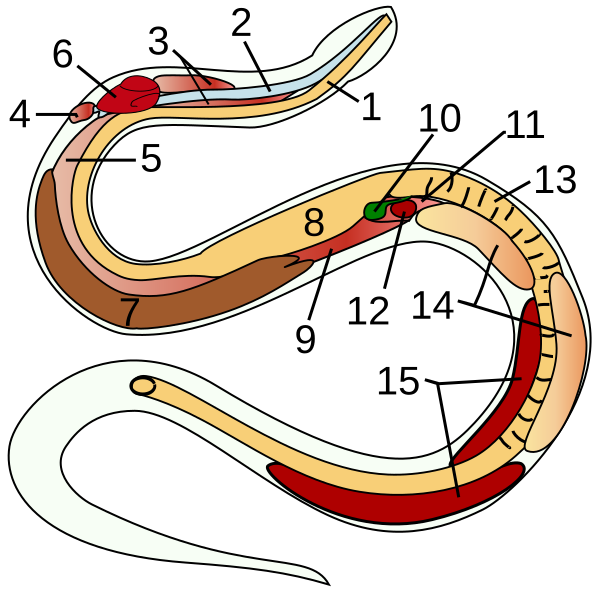
image credit: https://commons.wikimedia.org/wiki/File:Snake-anatomy.svg
Snakes pretty much have the same organs that we do! However, snake organs are elongated so that they can fit inside of their long, slender bodies. Snakes and lizards have a 3-chambered heart, compared to mammals that have 4 chambers. Snakes do not have diaphragms, so they have to use their muscles along the length of their body to bring air into their lungs. For this reason, we refer to the inside of reptiles' bodies as a coelom.
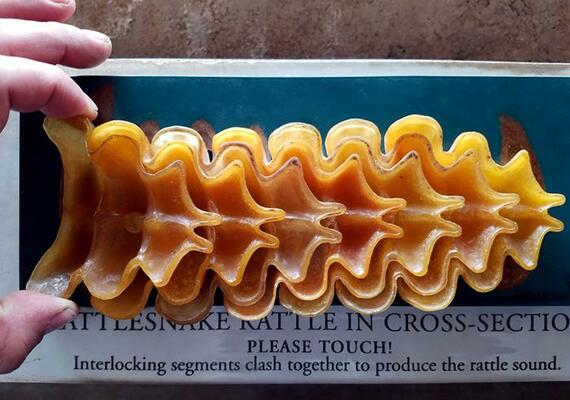
You may know that rattlesnakes are able to warn before striking a victim by rattling their tail.
What is inside of their rattle that makes it sound like a maraca? Sand? Bones? Capsules of venom? The rattlesnake's rattle is actually made of a material called keratin (the same material that makes your fingernails). Every time the snake sheds, another piece gets added to the end of the tail. The pieces at the end of the rattlesnake's tail knock against each other when the snake contracts its muscles to move the tail. This action produces the rattling sound. Other than these interlocking, keratinized pieces, the rattlesnake's rattle is hollow inside.
Image Credit: https://i.redd.it/cgs8akn6z9931.jpg
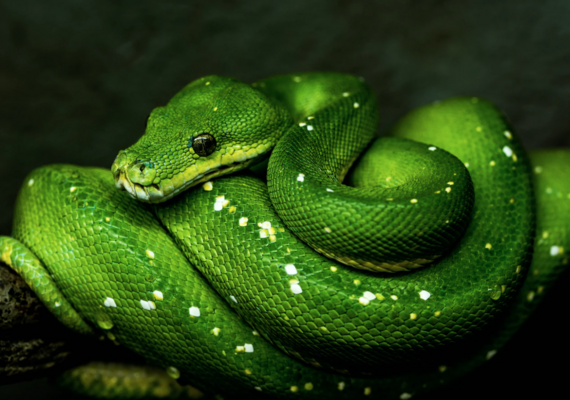
Snake Senses
Have you ever seen a snake sticking its tongue out? Do you know why they do this? Snakes have a very well developed sense of smell. They are able to use their tongue and a special organ in their mouth called the vomeronasal organ to "taste" the air in their environment! So when you see a tongue sticking out its tongue, its actually "tasting" its environment!
Snakes are also able to perceive the world through changes in temperature using thermoreception! They have incredibly sensitive thermoreceptors in their facial or labial pits that can detect very small changes in temperature in their environment!
These special senses help snakes excel as predators!
Snake Anatomy
Watch this video to learn more about snake anatomy!
Lizard Anatomy
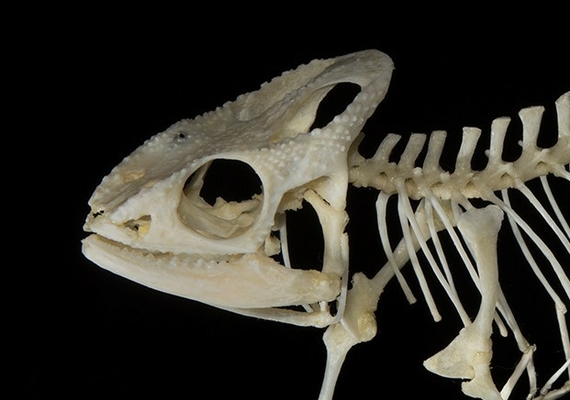
Squamata
Snakes and Lizards are both in the order Squamata, meaning scaled reptiles. Because they are related, they share many anatomical characteristics with snakes including their 3-chambered heart and lack of a diaphragm. Lizards do not require that their organs be elongated, and they also have longer tails compared to snakes. Typically lizards have true eyelids, rather than a clear scale covering their eyes seen in snakes. They also will have external ear openings, which isn't seen in snakes. Lizards can have a lot of variability between species! Look at this chameleon skeleton and its unique skull!
Image credit to https://www.madcham.de/en/anatomie/
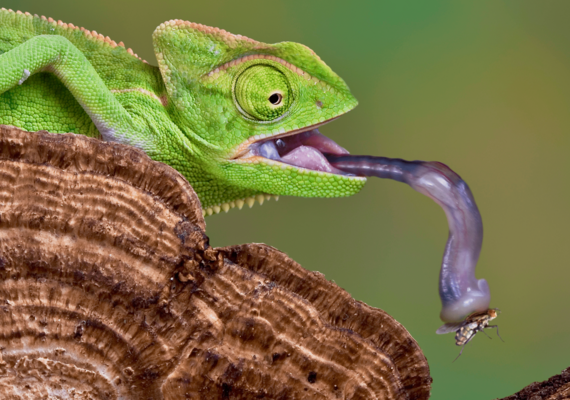
Chameleons
Some species of lizards have a high level of involvement of their tongue when feeding! Lizards such as geckos and chameleons use their tongues to retrieve their food but snakes do not use their tongue when acquiring food.
Chameleons catch insect prey by quickly protruding their tongues from their mouths. Their prey adhere to the sticky mucous of their tongue, and by quickly retracting their large tongues back into their mouths, these reptiles can secure their next meal. On average, chameleons have tongues that are twice the length of their bodies!
Image Credit: https://1d59b73swr1f1swu2v451xcx-wpengine.netdna-ssl.com/wp-content/uploads/2017/09/Chameleon-Tongue_Cathy_Keifer-2160x1801.png
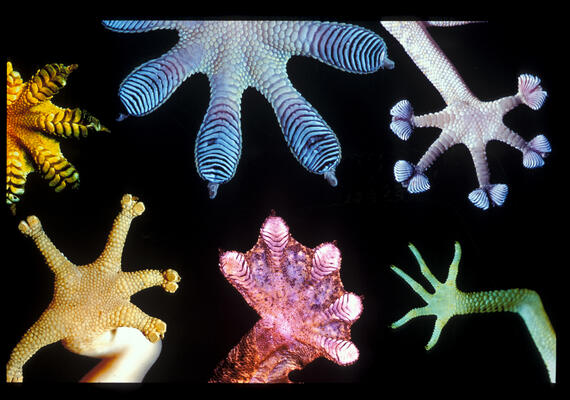
Special Lizard Skills
Have you every asked yourself how geckos stick onto almost any surface and how they are able to climb on roofs and walls?
Gecko feet have very uniquely adapted toe pads that are covered in many tiny hairs called setae. The setae are made of keratin, the same material that make up our fingernails and horse hooves. These setae use the power of physics to stick to surfaces!
Image credit: https://www.nsf.gov/news/mmg/media/images/GeckoFeet_h.jpg
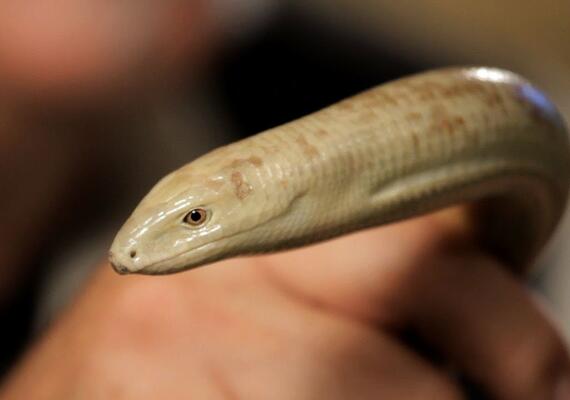
Lizard or Snake?
The easiest way to tell between a snake and a lizard is their legs (or lack thereof!) But, what about this species of lizard in the photo on the left that doesn't have any legs?
There are two things we can look for:
1) This lizard species has moveable eyelids while snakes do not!
2) If we trace back from their lips, we can find a hole that is the external ear! Lizards have external ears while snakes do not.
Turtle Anatomy
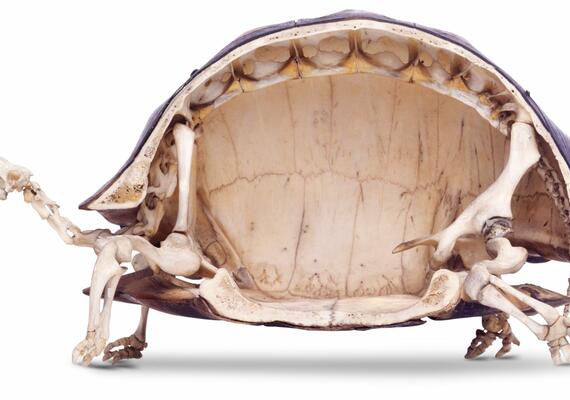
Turtles and tortoises are in the order Chelonia (reptiles with a hard, bony shell)
"Turtle" includes both aquatic and land species, while "tortoise" only includes land species of turtles. The turtle shell is actually made of their skeleton, which is why it is important to not pick up a turtle by the top of its shell, as it can be very painful to them. We call a turtle's dorsal shell a carapace and the ventral part of the shell the plastron.
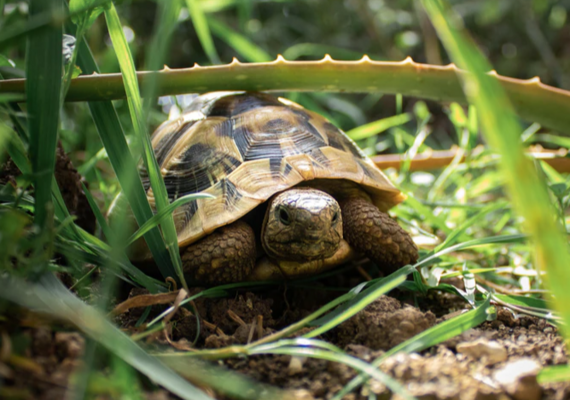
Urinary Bladder
The urinary bladder is a sac that collects urine produced by the kidneys, and holds it until the animal is ready to excrete their urine. However in turtles, the bladder can also act as a place to hold water! Turtles have 2 or more urinary bladders in which they are able to store water that they can use later when fresh drinking water is not readily available!
Another less obvious difference between turtles and snakes is that turtles often have 2 or more urinary bladders while snakes do not have a urinary bladder at all. Can you think of any reasons why snakes lack a urinary bladder?
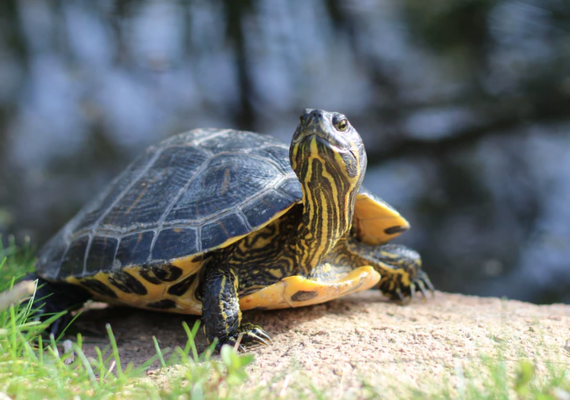
How do Turtles Breath?
Turtles are able to breath by actively contracting the muscles in their limbs, allowing them to move their limbs so that they can contract their coelom and breath in and out!
Many aquatic species of turtles are also able to exchanges gases across the surface of their shell, neck, and cloaca. So some turtles can breath through their butt!
Rabbit Anatomy
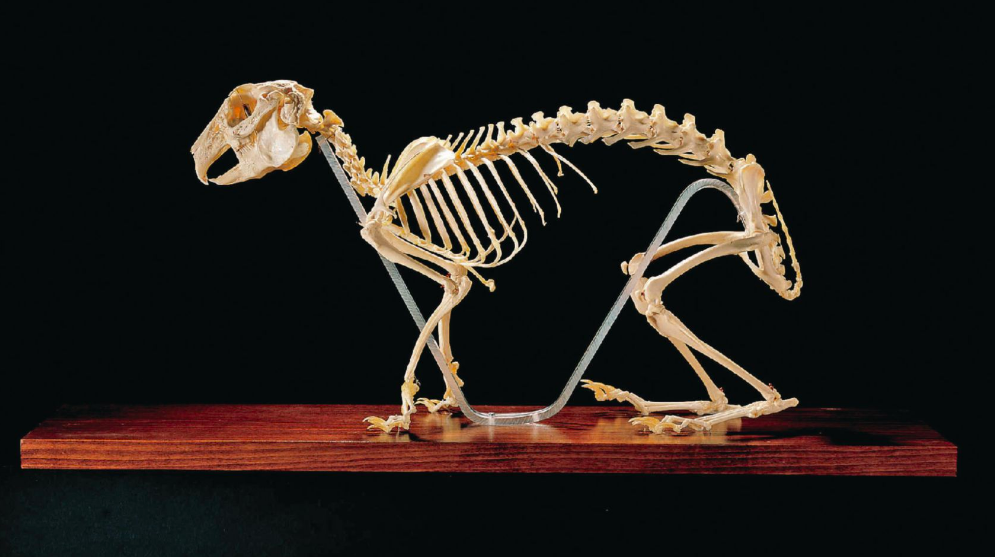
https://www.wardsci.com/store/product/8885427/ward-s-rabbit-skeleton
Rabbits have a very light skeleton and very powerful hindlegs. Unfortunately, this also makes them prone to getting injured and breaking bones, such as their lower back vertebrae. This is why the proper handling of rabbits is so vital, and we must do all that we can to prevent them from injuring themselves!
The image on the right shows an overview of the rabbit skeleton. Can you name any of the major bones you have learned this week?
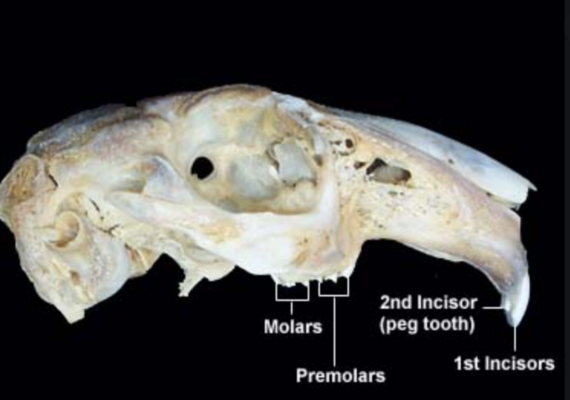
Rabbit Teeth
Rabbits have elodont incisor and molar teeth. This means that their teeth continuously grow throughout their life, like horses. In order to maintain the appropriate length, rabbits have to gnaw and grind down their teeth. If rabbits are unable to wear down their teeth, they become too long, painful, and prevent the rabbit from eating!
Rabbits also have unique peg teeth which are a second pair of upper incisors.
Image credit: https://lh3.googleusercontent.com/proxy/IqWl6M8dOTwLoLcivz-QTuVIN9itlQo7v9hw4deiYhXx-S3-EBg8i9W82PTV6cJP786ahRElBTWrbDQqfQJVlVNygzxidSan5Q0ME2LniEht-KJaOTIxyq4JfgLTyfunvgpSygXcY10

Rabbits are herbivores
Rabbit's digestion is similar to horse's because they too are hindgut fermenters! They have a very large colon and cecum that acts as a house for bacteria that help them breakdown their food.
Did you know that rabbits produce two types of feces? One of these types of feces, called cecotropes, is softer and darker. Rabbits eat these cecotrope feces, in a process called coprophagy, to help increase the amount of nutrients they are able to get out of their food!
Guinea Pig Anatomy
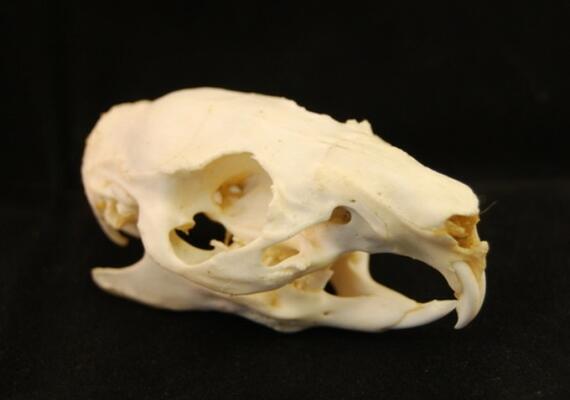
Guinea pigs are rodents
However, like rabbits, guinea pigs have elodont teeth. This means that their teeth grow continuously throughout their life and must be worn down through gnawing and grinning action to maintain the appropriate length.
Image credit: https://www.naturshowroom.com/wp-content/uploads/2014/05/Skull-Guinea-pig.jpeg

Guinea Pigs GI
Guine pigs are also hindgut fermenters like rabbits and horses, and have a large colon and cecum that house bacteria to help digest their food. Like rabbits, they also eat their feces, in a process of coprophagy, to increase the amount of nutrients they obtain from their food!
Did you know that guinea pigs require vitamin C in their diet? Like humans and other primates, guinea pigs do not produce their own vitamin C in their bodies, so they must acquire it from their food! If guinea pigs do not receive enough vitamin C in their diet they become sick. This is why it is very important to feed guinea pigs diets fortified with vitamin C!
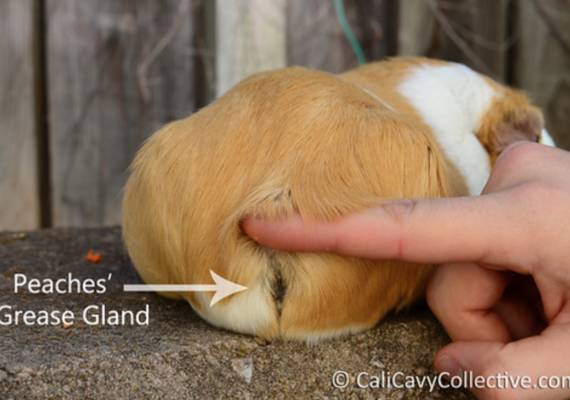
Grease Glands
Did you know that guinea pigs have glands where their tail bone would be called coccygeal or grease glands? These glands produce a greasy substance that guinea pigs use for marking their territory. Male guinea pigs also use the scent from these glands to attract female mates.
Hedgehog Anatomy

Spikes
Did you know that hedgehog spines are actually hollow hairs that are made stiff with keratin, the same material that makes up your fingernails and horse hooves? Each hedgehog can have between 5000-7000 spines! Hedgehog spines are not barbed and do not easily detach from their bodies. However, as they age, spines will naturally fall out and be replaced. Hedgehogs also have muscles that control the position of the spines.
Hedgehogs use these spines for self defence. In the presence of danger, hedgehogs will curl up in a ball with their spines facing outwards to protect and defend themselves.
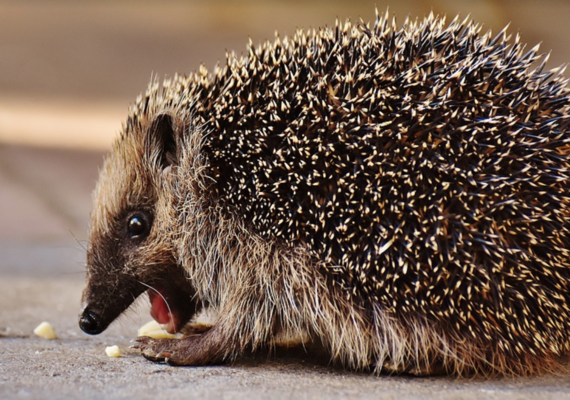
Hedgehog Diet
Hedgehogs are omnivores, but primarily they are insectivores. They eat plants, meat, and mainly insects! Their long nose and good senses of smell and hearing help them forage for insects and other foods in hard to reach places.
Hedgehogs have simple digestive tracts, with one simple stomach, a smooth non-complex colon, and they lack a cecum.
